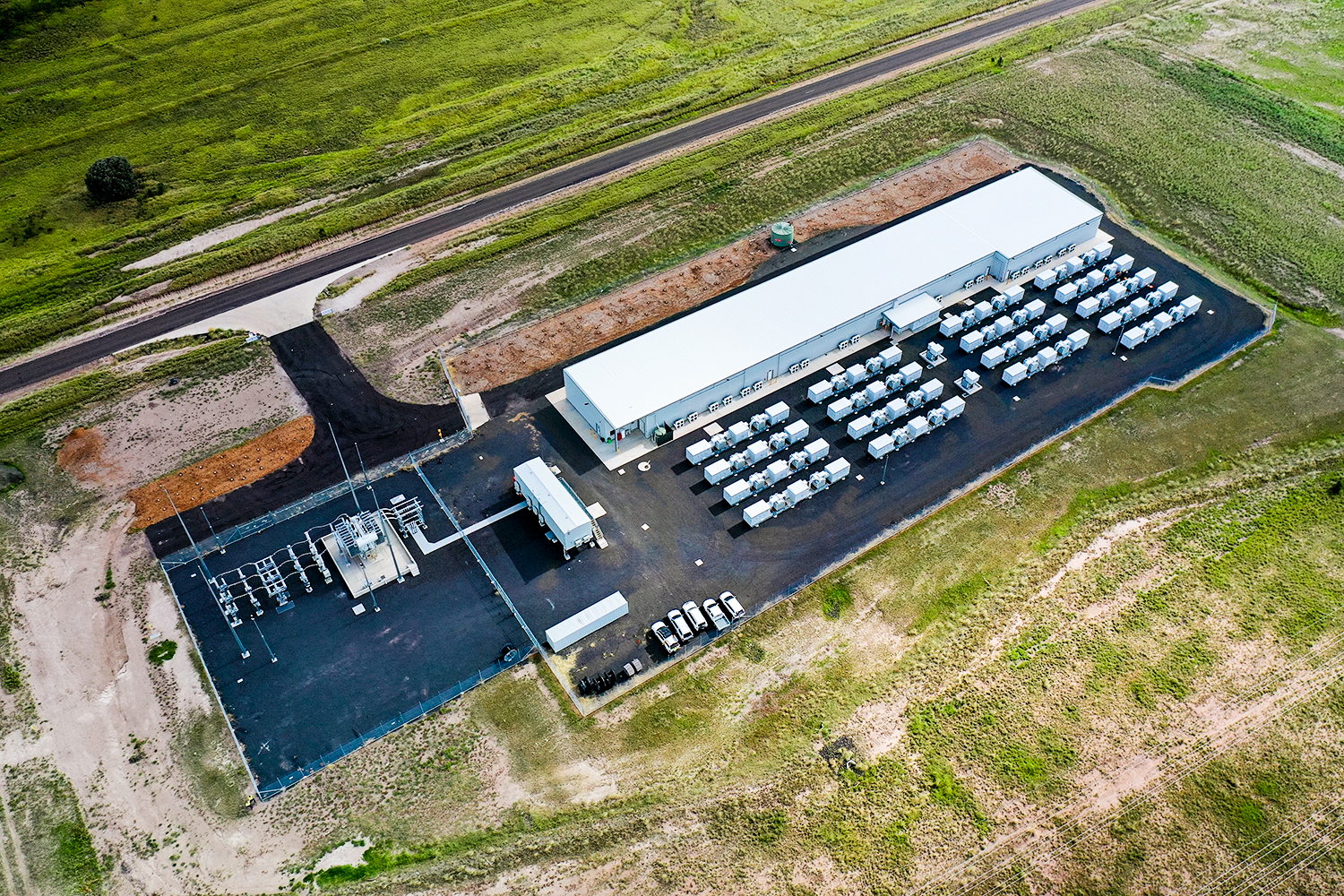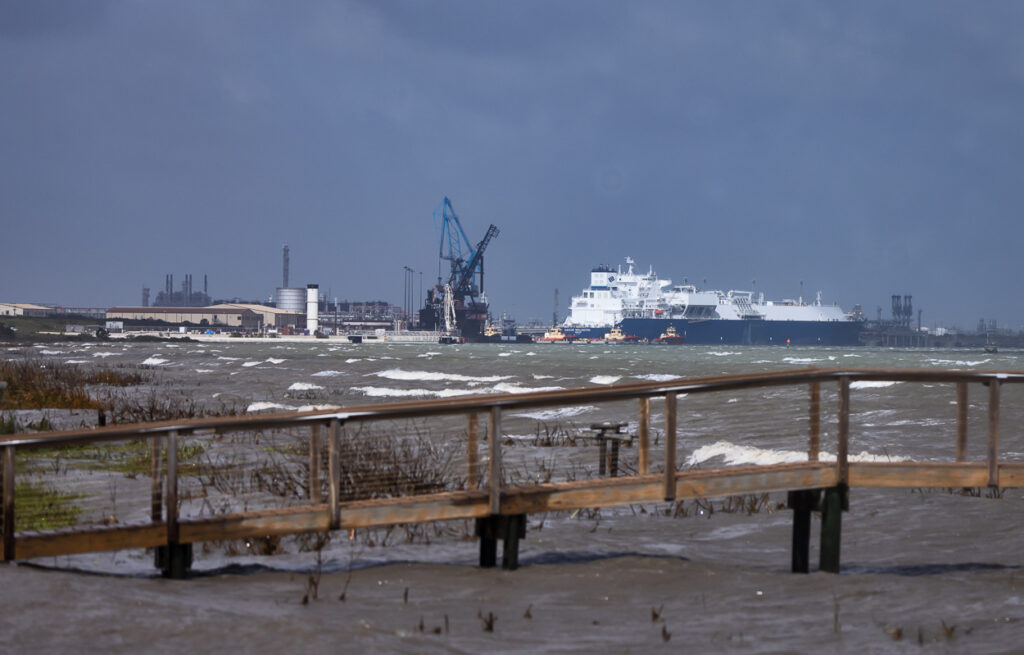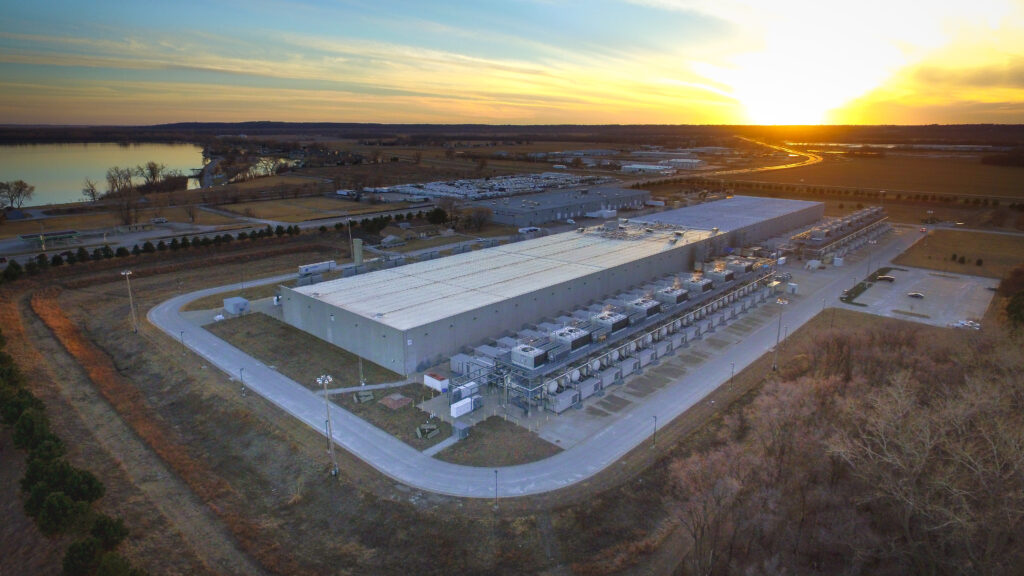Alberta Premier Danielle Smith’s recent comments about the use of batteries for renewable energy infrastructure surprised experts, one of whom described the premier’s comments as possibly ideologically motivated misinformation.
Smith was the keynote speaker addressing the Pembina Institute’s Alberta Climate Summit in Calgary on October 26th. The Pembina Institute is a Canadian think tank and registered charity that focuses on clean energy and energy policy.
It was during a question and answer session with the premier that Smith rhetorically asked whether those present thought it was possible for Alberta to build the infrastructure necessary to complete a transition to net zero emissions by the year 2035.
Many in the audience enthusiastically responded ‘yes.’
One of those who challenged the premier’s assertion against renewable energy sources was Derek Power of Toronto, the founder of Power Networks, a company that installs solar roofs.
After Smith asked, “And what do I do when there’s no sun and there’s no wind?,” Power responded, “Batteries.”
Smith then replied that she wanted to discuss batteries despite Canadian TV host Dave Kelly’s attempts to intervene. “I want to talk about batteries for a minute because I know that everybody thinks that this economy is going to be operated on wind and solar and battery power, and it cannot. There is no industrialized economy in the world operating that way because they need base load,” the premier said.
However, base load refers to the minimum amount of demand on an electrical grid over a given period of time, not a minimum level of constant supply.
Smith continued: “I’ll tell you what I know about batteries, because I talked to somebody who was thinking of investing in a 200-megawatt plant, $1 million to be able to get each megawatt stored. That’s $200 million for his plant alone. And he would get one hour of storage. So if you want me to have 12,000 megawatts of storage, that’s $12 billion for one hour of storage, $24 billion for two hours of storage, $36 billion for three hours of storage. And there are long stretches in winter where we can go weeks without wind or solar.”
Five Countries Run on 100 Percent WWS
Smith’s comments don’t make much sense, according to Stanford University civil and environmental engineering professor Mark Z. Jacobson, who also leads the institution’s Atmosphere/Energy Program.
“There are five countries in the world that run on 100 percent wind-water-solar (WWS) alone with zero batteries, zero nuclear, and zero fossil fuels. Another four countries are at 98.5-100 percent WWS,” he said.
The list of nations with greater than 98.5 percent of their energy coming from fully renewable sources, without even using batteries for storage, include Costa Rica, Bhutan, Nepal, Paraguay, Norway, and Albania, among others.
“Canada is ranked thirty-first and runs on 65.61 percent WWS for the electric power sector,” said Jacobson. “So, to say Canada can’t go to 100 percent WWS like five other countries, even though Canada is already 65.6 percent WWS, seems based on ideology and not science.”
“Much of what she says about batteries is misinformation,” Jacobson told DeSmog.
“First, most batteries today are four-hour batteries, not one-hour batteries,” he said, referring to large-capacity batteries used in renewable energy grid infrastructure. “I don’t think there are any one-hour batteries around. Old ones, such as first-generation Teslas, provided two hours of storage.”
“California now has 6.62 GW/26.5 GWh of battery storage with 1.9 GW more expected by the end of 2023 for a total of 8.52 GW/34.1 GWh,” Jacobson tweeted last month, referring to gigawatts (GW) and gigawatt hours (GWh).
In an email exchange with DeSmog, Jacobson noted, “Of the 6.62 GW in place now, 5.23 GW are utility, with 0.84 GW residential and 0.54 GW commercial. These batteries match approximately 25 percent of peak demand in all but summer, and approximately 12.5 percent of summer peak demand for four hours, twice a day.”
“Thus, they give eight hours of storage when used twice a day, not one hour,” Jacobson continued. “Combining wind, solar, hydro, and non-hydro electricity storage [which is mostly batteries] can keep Canada’s grid stable upon electrification of all energy sectors every 30 seconds for three years, as demonstrated here with modeled intermittent wind, solar, and temperature data.”
According to the scientific modeling of experts, the total electrification of Canada’s energy grid using fully renewable sources isn’t only achievable, but it’s stable as well. But that’s just one part of the bigger picture.

Jacobson also determined that fully electrifying Canada’s energy grid with renewable energy and battery storage would further save 3,800 lives annually from air pollution-related deaths, and eliminate nearly one billion tonnes of carbon dioxide equivalent. In addition, it would create 275,000 more long-term, full-time jobs than those lost (not counting new jobs in manufacturing electrically powered vehicles, appliances, and machines), and would further reduce energy costs by nearly 70 percent.
“Premier Smith’s conclusion is not based on evidence and contradicted by research such as my own,” Jacobson told DeSmog.
Smith doesn’t seem to be making decisions based on scientific evidence or by consulting with experts, despite her frequent statements to that effect.
“Danielle Smith’s idea of an energy transition is to move from coal to oil,” Keith Stewart, senior energy strategist with Greenpeace Canada, told DeSmog in a recent interview. “She never met a fossil fuel lobbyist she didn’t love.”
”She is personally one of the largest barriers to climate action in Canada right now,” he continued. Stewart also said that Smith is exploiting Western Canada’s legitimate historical complaints of unfair treatment by the federal government to block meaningful climate action.
“Danielle Smith is a bully,” said Derek Power, the man who challenged Danielle Smith’s battery misinformation at the Pembina Institute’s conference. He also told DeSmog that she seemed to be caught off guard speaking to an audience that had technical expertise in the field.
When contacted by DeSmog, Smith’s office did not respond to requests for comment.
In addition to his 17 years of experience in solar roof installation, Power is also involved in decommissioning solar fields and wind turbines with Sunset Renewables. Sunset has a 380-acre facility in Brooks, Alberta, which happens to be in Brooks-Medicine Hat, the provincial electoral district Smith represents in the Alberta Legislative Assembly.
“She has no idea this industry is happening in her own backyard,” said Power.
At the Pembina conference, Power tried to argue that “peaker plants” wouldn’t be necessary if a sufficient number of houses and buildings were outfitted with solar roofs of the type that are already widely commercially available. Power estimates that installing between four and eight solar panels on all the homes in Alberta’s two largest cities—Calgary and Edmonton—along with nocturnal recharging of their batteries, would negate the need for any new power plants using fossil fuels.
“We have no excuse not to transition – it’s a greed thing,” said Power. “This is a huge potential business opportunity. Canada should be leading the world on the energy transition, not leading in emissions.”
Jacobson added that Smith’s misunderstanding isn’t simply limited to how batteries work or what the term “base load” means, but also that base load power can be intermittent, irrespective of the energy source.
“Nuclear is down 10-50 percent of the hours of the year for planned or unplanned maintenance,” said Jacobson. “The average capacity factor of all nuclear reactors in France in 2022 was 52 percent, thus, every reactor was down an average of 48 percent of the hours, so not supplying baseload power.”
“Just like nuclear operators in France will claim that it’s okay because they have so many reactors that when some are down, others fill in the gap, the same applies to wind and solar,” he added. “Batteries fill in additional gaps, and solar combined with wind and batteries fill in even more gaps.”
Jacobson’s research demonstrates that adding hydropower to this mix of renewable energy sources, as well as batteries, can meet 100 percent of Canadian demand without using any fossil fuels or nuclear power.
Subscribe to our newsletter
Stay up to date with DeSmog news and alerts






